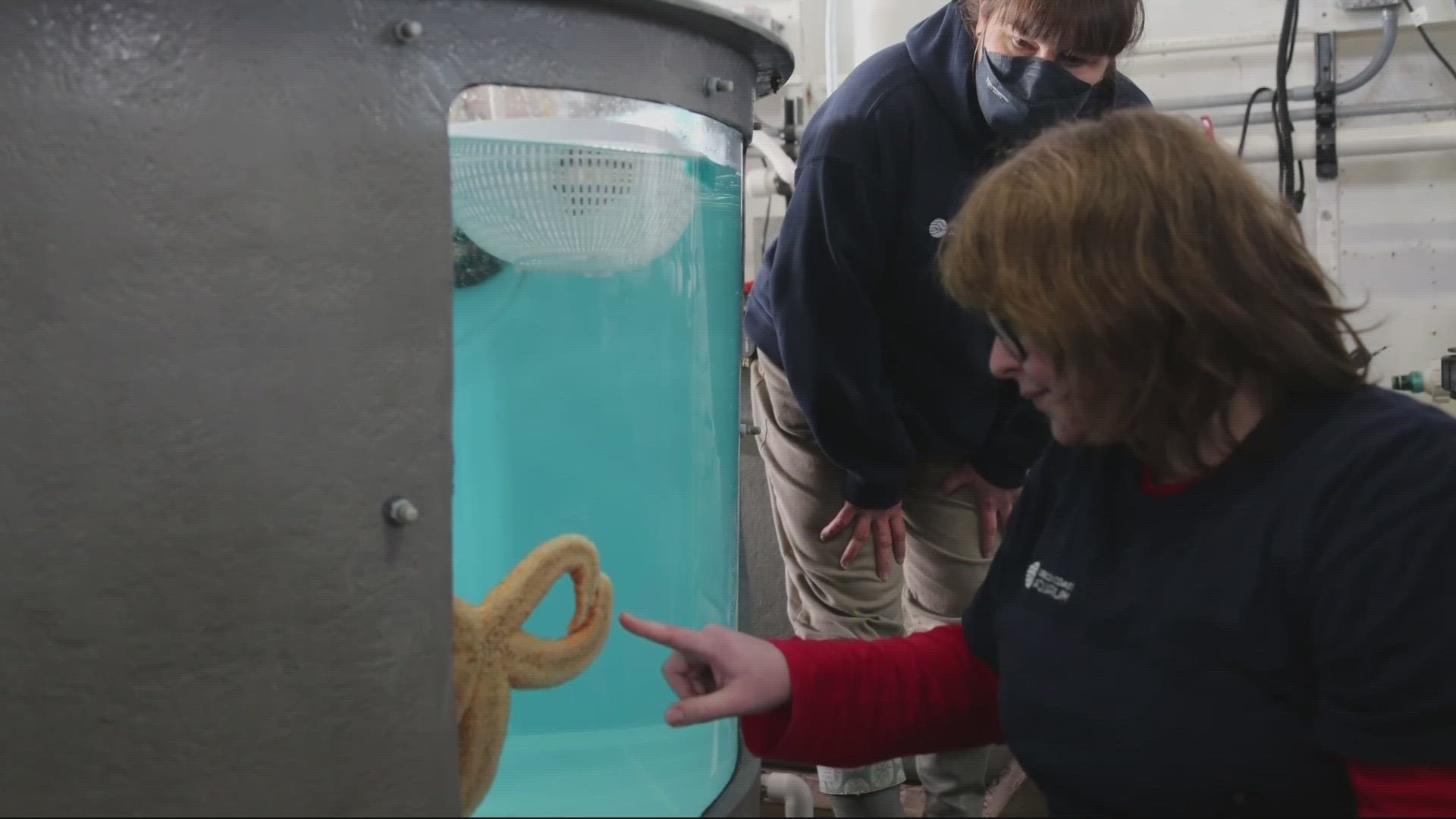PORTLAND, Ore. —
For nearly a decade, researchers have been trying to figure out what killed all the sea stars along the West Coast.
Around 2013, multiple species of sea star began dying from an illness known as Sea Star Wasting Disease. The animals would begin losing arms before eventually dissolving into the ocean.
But while the search for what causes the disease continues, one researcher at the Oregon Coast Aquarium in Newport has made a breakthrough on treating the ailment.
“The first few trials that we did, they worked and they worked really well. It was better than anything we've seen before and we were like, ‘Oh, OK, this is amazing,’” said Tiffany Rudek, an aquarist at the facility.
It’s hard to overstate just how hard the sea star population has been hit by the disease on the West Coast. From Baja, Mexico, to the Aleutian Islands in Alaska, the animals were nearly wiped out with estimates as high as six million individual animals perishing from the illness.
Experts have still yet to determine what causes the disease, but there are two leading theories circulating among experts. Some think the sea stars may have fallen victim to a waterborne virus that spread between the animals. Others have hypothesized that perhaps a microbial change made it difficult for the animals to absorb oxygen through their skin, effectively suffocating them.
Experts have found the disease appears to be exacerbated in warmer waters, and the onset of the disease coincided with an abnormal marine heatwave, though a definitive link between warming and the illness has remained elusive.
Sea stars, especially the sunflower sea star, which can grow up to 3 feet wide with as many as 24 arms, play an important role in the marine ecosystem. They are voracious predators of the purple sea urchin and, since their disappearance, urchin populations have exploded.
Urchins primarily feed on kelp and kelp forests have dwindled precipitously since the sea star die-off. Kelp forests provide food and shelter for dozens of other species, from tiny invertebrates to marine mammals, so the ripple effects have been felt up and down the food chain.
At the Oregon Coast Aquarium, Rudek had seen several of their sea stars fall victim to the disease, and previous treatments, often using antibiotics, had only mixed results at best.
“I was pretty determined that I was going to figure out an alternative,” she said. “And so I started looking at things very differently.”
Instead of attempting to treat the symptoms, Rudek sought to create an environment free of stressors for sick sea stars.
“It's really, really focused on essentially putting the star in like an equilibrium state,” Rudek said. “It's basically in this perfect little bubble and it can use all of its energy to heal itself.”
When a sea star first shows symptoms of the disease, it is immediately quarantined, Rudek said, and given a bath in an iodine solution. Then, the animal is moved to another tank where the temperature and PH levels are carefully controlled.
Rudek developed a mineral cocktail that is mixed in with the water to supply the animals with everything they need to be healthy. She said that the changes in the stars are visible almost immediately.
“They're kind of twisted up usually and very unhappy looking,” she said, “and then they go in the bath and they just kind of relax.”
The results have been very encouraging. So far, 15 of the 17 sick sea stars have fully recovered, with several more currently undergoing treatment.
Rudek was clear that the regimen is not a cure for the disease, and it would be impossible to recreate in the wild. Still, it’s a breakthrough that could help the species over the long run.
Several labs have been attempting to breed sea stars in captivity so they can be released into the wild, and Rudek was hopeful that her treatment method could bolster those animals’ chances of survival.
“It could potentially have a lot of big, big wide applications at this point,” she said.

